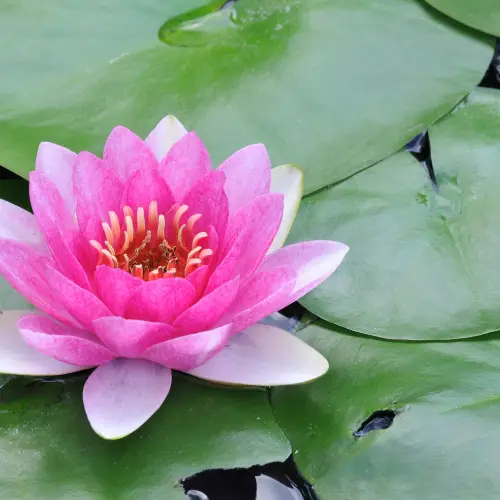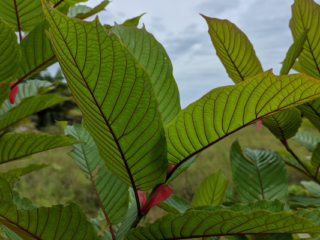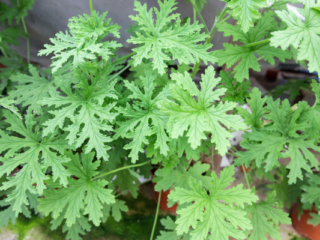Water-Growing Aquatic Flowers: Among the many wonders that adorn our planet, there is one special category of flower that captures our imagination: the aquatic flower.
In this blog post, we are diving into the aquatic realm and discovering the fascinating world of water-growing flowers.
From the Tranquil Lotus to the Vivid water lily, each bloom tells a story of resilience, adaptability, and sheer natural beauty.
Top 16 Aquatic Flowers That Grow in Water
1. Water Lily

Water lilies are another enchanting variety of aquatic flowers that capture the imagination with their vibrant hues and delicate petals. These blooms, characterized by floating leaves and colorful blossoms, create a serene and picturesque scene on ponds and lakes. From the classic white water lily to the radiant pink and yellow varieties, each flower adds a touch of elegance to aquatic landscapes.
2. Blue Lotus

The blue lotus, scientifically known as Nymphaea caerulea, holds historical and cultural significance in ancient civilizations. Native to Egypt, this flower was associated with the sun god Ra and was often used in religious ceremonies. Beyond its cultural symbolism, the blue lotus has also been recognized for its potential medicinal properties, with historical texts suggesting its use in various herbal remedies.
3. Cape Blue Water Lily

Cape Blue Water Lily
Dive into the waters of South Africa, and you may encounter the striking Cape blue water lily (Nymphaea capensis). With its sky-blue petals and distinctive yellow stamens, this aquatic beauty adds a burst of color to freshwater habitats. Explore the unique adaptations that allow this species to thrive in diverse environments, from still ponds to flowing rivers.
4. Aquatic Orchids

Aquatic Flowers That Grow in Water
While orchids are often associated with lush tropical forests, some species have adapted to aquatic environments. Delve into the world of aquatic orchids, exploring their unique adaptations and the mesmerizing beauty they bring to underwater ecosystems. From floating orchids to those that cling to rocks beneath the water’s surface, these blooms showcase the diversity and resilience of the orchid family.
5. Water Hyacinth

The water hyacinth (Eichhornia crassipes) is both admired for its aesthetic appeal and scrutinized for its invasive nature. Originating from the Amazon basin, this floating plant has spread to various parts of the world, creating dense mats on the water’s surface. Explore the ecological impact of water hyacinths, the challenges they pose, and the efforts to manage their proliferation.
6. Pickerelweed

Native to North America, pickerelweed (Pontederia cordata) is a striking aquatic plant known for its spike-like clusters of violet-blue flowers. Growing along the edges of ponds and slow-moving streams, pickerelweed provides not only a burst of color but also serves as a valuable habitat for aquatic insects and small fish. Explore the ecological role of this native gem and its historical uses by Native American tribes.
7. Arrowhead Plant

Also known as sagittaria, the arrowhead plant (Sagittaria spp.) derives its name from its arrow-shaped leaves. Found in both shallow and deep waters, this aquatic plant produces delicate white flowers that stand in contrast to its robust foliage. Dive into the architectural beauty of arrowhead plants, examining their adaptive features and their role in enhancing the biodiversity of aquatic ecosystems.
8. Water Iris

Water irises (Iris pseudacorus) bring a touch of elegance to the margins of ponds and water bodies. Characterized by their sword-like leaves and showy flowers in various colors, water irises thrive in both wet and submerged conditions. Uncover the cultural significance of these blooms, from their presence in mythology and art to their modern applications in landscaping and water purification efforts.
9. Aquatic Forget-Me-Not

The aquatic forget-me-not (Myosotis scorpioides) may be diminutive, but its clusters of tiny, sky-blue flowers make a lasting impression. Flourishing along the edges of ponds and streams, this charming plant not only adds aesthetic value to aquatic landscapes but also plays a role in supporting pollinators. Explore the symbolism behind its name and its ecological contributions to riparian ecosystems.
10. Water Hawthorn

Dive into the unique characteristics of the water hawthorn (Aponogeton distachyos), an aquatic plant that defies the conventional expectations of flowering times. Unlike many aquatic blooms that favor the warmth of spring and summer, the water hawthorn graces water gardens with its fragrant white flowers during the cooler months. Delve into the biology that allows this winter bloomer to thrive in aquatic environments.
11. Floating Heart

The floating heart (Nymphoides spp.) is a charming aquatic plant with heart-shaped leaves that float on the water’s surface. Native to various regions around the world, these plants produce delicate yellow flowers that add a touch of romance to ponds and quiet water bodies. Learn about the unique adaptations that allow the floating heart to thrive in different aquatic environments and the ecological roles it plays in supporting aquatic life.
12. Water Poppy

The water poppy (Hydrocleys nymphoides) is a delightful aquatic flower known for its golden-yellow blooms resembling poppies. With round, lily-pad-like leaves and vibrant flowers that stand out against the water’s surface, the water poppy is a favorite in water gardens. Explore its native habitats, cultivation tips, and the visual appeal it brings to ornamental water features.
13. Aquatic Aroids

Aroids, a family of plants that includes the well-known calla lily, also have aquatic members that thrive in wetland habitats. Explore the diversity of aquatic aroids, such as the arrowhead plant (Syngonium podophyllum) and the tropical water lettuce (Pistia stratiotes). Delve into their unique characteristics, from arrow-shaped leaves to intricate inflorescences, and appreciate how these plants contribute to both terrestrial and aquatic ecosystems.
14. Water Cannas

Water cannas (Thalia spp.) bring a tropical splash of color to ponds and marshy areas. Known for their tall stems and vibrant, paddle-shaped leaves, water cannas produce clusters of showy flowers that attract pollinators. Dive into the characteristics of different Thalia species, their cultural significance, and their role in enhancing biodiversity in wetland habitats.
15. Aquatic Bulrush

Bulrushes, belonging to the genus Scirpus, are common in wetland areas and are often found partially submerged in water. These hardy plants play a crucial role in stabilizing shorelines and providing habitat for aquatic organisms. Explore the ecological functions of aquatic bulrushes, their unique adaptations for life in waterlogged soils, and their historical uses by various cultures.
16. Water Milfoil

Water milfoil is a submerged aquatic plant known for its feathery, finely divided leaves. Adapted to life beneath the water’s surface, water milfoil plays a vital role in improving water quality by absorbing nutrients. Discover the different species of water milfoil, their growth habits, and their contributions to maintaining the ecological balance in freshwater ecosystems.
Here’s a table summarizing some of the aquatic flowers discussed in the blog post, highlighting their key features and characteristics:
| Aquatic Flower | Scientific Name | Key Features | Symbolic Significance/ Uses |
|---|---|---|---|
| Lotus | Nelumbo spp. | Iconic bloom, emerges from muddy waters | Symbolizes purity, enlightenment; Used in religious and cultural ceremonies |
| Water Lily | Nymphaea spp. | Vibrant flowers, floating leaves | Adds elegance to ponds; Cultural symbolism in various societies |
| Blue Lotus | Nymphaea caerulea | Blue petals, historical significance | Associated with ancient Egyptian mythology; Historical use in herbal remedies |
| Cape Blue Water Lily | Nymphaea capensis | Sky-blue petals, yellow stamens | Native to South Africa; Adds a burst of color to freshwater habitats |
| Water Hyacinth | Eichhornia crassipes | Floating plant, invasive nature | Aesthetic appeal but poses ecological challenges; Efforts to manage proliferation |
| Pickerelweed | Pontederia cordata | Violet-blue spikes of flowers | Native to North America; Provides habitat for aquatic insects and small fish |
| Arrowhead Plant | Sagittaria spp. | Arrow-shaped leaves, showy flowers | Thrives in shallow and deep waters; Enhances biodiversity in aquatic ecosystems |
| Water Iris | Iris pseudacorus | Sword-like leaves, various colored flowers | Cultural significance; Used in landscaping and water purification efforts |
| Aquatic Forget-Me-Not | Myosotis scorpioides | Tiny, sky-blue flowers | Adds aesthetic value to aquatic landscapes; Supports pollinators |
| Water Hawthorn | Aponogeton distachyos | Fragrant white flowers, winter bloomer | Blooms during cooler months; Adds fragrance to water gardens |
| Floating Heart | Nymphoides spp. | Heart-shaped leaves, yellow flowers | Romantic symbolism; Adds charm to ponds and quiet water bodies |
| Water Poppy | Hydrocleys nymphoides | Golden-yellow poppy-like blooms | Ornamental water feature; Adds visual appeal to water gardens |
| Aquatic Aroids | Various, including Syngonium | Diverse species with unique features | Arrowhead plant and tropical water lettuce are examples; Contribution to terrestrial and aquatic ecosystems |
| Water Cannas | Thalia spp. | Tall stems, paddle-shaped leaves, vibrant flowers | Tropical splash of color; Enhances biodiversity in wetland habitats |
| Aquatic Bulrush | Scirpus spp. | Common in wetland areas, stabilizes shorelines | Provides habitat; Historical uses by various cultures |
| Water Milfoil | Myriophyllum spp. | Submerged plant with feathery leaves | Improves water quality; Absorbs nutrients; Contribution to freshwater ecosystem balance |
Here’s a set of frequently asked questions (FAQs) about aquatic flowers, along with concise answers:
Q1: What are aquatic flowers? Aquatic flowers are plants that grow and bloom in or near water. These plants have adaptations that allow them to thrive in aquatic environments, ranging from fully submerged species to those with floating or emergent blooms.
Q2: Where are aquatic flowers typically found? Aquatic flowers can be found in various water bodies, including ponds, lakes, rivers, marshes, and wetlands. They are adapted to different water conditions, from still ponds to flowing rivers.
Q3: What is the significance of the lotus flower? The lotus flower holds cultural and symbolic significance in various societies. It symbolizes purity, enlightenment, and spiritual growth, as it emerges from muddy waters unblemished. In Hinduism and Buddhism, the lotus is often associated with divine beauty and transcendence.
Q4: Are all aquatic flowers ornamental? While many aquatic flowers are appreciated for their ornamental value in water gardens and landscaping, some also play vital ecological roles. Aquatic plants contribute to nutrient cycling, provide habitat for aquatic life, and help maintain water quality.
Q5: How do aquatic flowers adapt to life in water? Aquatic flowers have various adaptations, such as specialized root systems for anchoring in mud, floating leaves to capture sunlight, and flexible stems to withstand water currents. These adaptations help them thrive in different aquatic habitats.
Q6: Can aquatic flowers be invasive? Yes, some aquatic flowers, like water hyacinth, can be invasive. When introduced to new ecosystems, they may outcompete native plants, disrupt local biodiversity, and pose challenges for water management.
Q7: Are there medicinal uses for aquatic flowers? Certain aquatic flowers, like the blue lotus (Nymphaea caerulea), have historical mentions of medicinal uses in traditional practices. However, the medicinal properties of aquatic flowers vary, and caution should be exercised.
Q8: How can I incorporate aquatic flowers into my garden? To incorporate aquatic flowers into your garden, consider planting them in containers or designated water features. Choose species that are suitable for your climate and water conditions. Proper care, including sunlight and nutrient management, is essential for their successful cultivation.
Q9: Do all aquatic flowers float on the water’s surface? No, not all aquatic flowers float on the water’s surface. Some have floating leaves and blossoms, while others are fully submerged. There are also emergent aquatic flowers that grow along the water’s edge with their roots submerged.
Q10: What is the role of aquatic flowers in ecosystems? Aquatic flowers play crucial roles in ecosystems. They contribute to nutrient cycling, provide habitat for aquatic organisms, stabilize shorelines, and improve water quality by absorbing excess nutrients.




